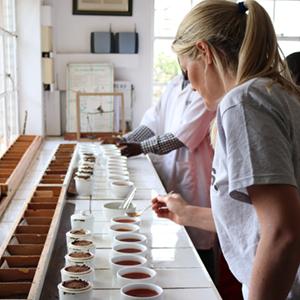
our tea taster
Co-founder, Louise is a fully fledged tea taster – aprons, spoons and all. With over 15 years experience slurping and sourcing tea, she can spot a good cuppa a mile off. Having travelled the world visiting various tea estates, Louise sources our teas from just a tiny pool of estates that meet her high quality standards, and tastes every batch of teapigs tea to ensure you only get the best cuppa.
If you’re wondering what tea a tea taster drinks for fun…Louise starts her mornings with two cups of everyday brew, at once! That’s when you know it’s the good stuff!
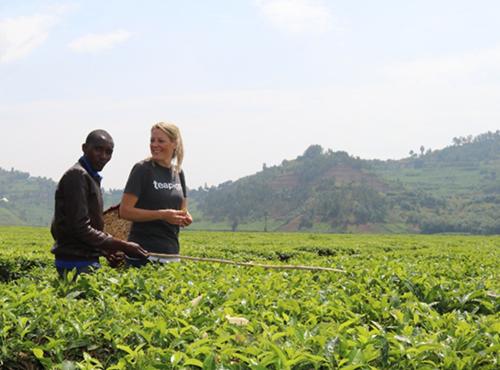
what is tea?
Did you know that green tea comes from the
same plant as black tea? In fact, one of the
most amazing things about tea is that whether it’s black, green, white or oolong, it ALL comes from the same plant; camellia sinensis (or the tea bush to you and me). The type of tea you end up simply depends on the processes the leaf goes through once it’s picked. Rooibos and herbals aren’t technically ‘teas’ at all, because they don’t come from the tea bush – but more on that later!
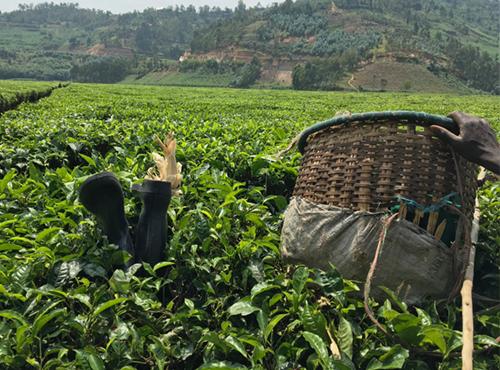
In its wild state, tea grows best in regions that enjoy a warm, humid climate with a lots of rainfall – typically, that’s the region between the Tropic of Cancer and the Tropic of Capricorn.
The big players in the world of tea growing are China, India, Sri Lanka and Kenya, followed by Turkey, Vietnam, Iran and Indonesia, but this is by no means an exhaustive list; tea can be grown in any area with the right climate and conditions…there’s even a tea estate in Cornwall!
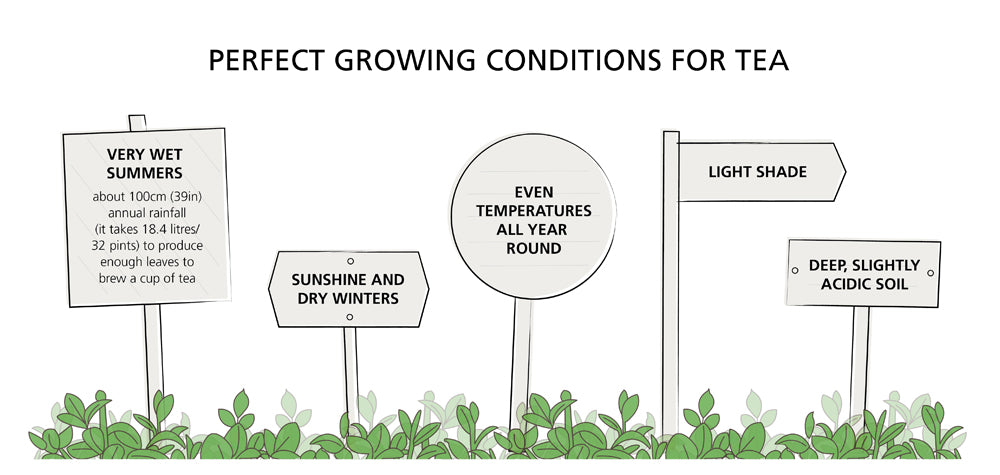
All teas are plucked then withered but it’s what happens next, and specifically how much the tea is allowed to ferment, that determines what type of tea it becomes. Fermentation (sometimes called “oxidation”) is what happens when air is allowed to get to the leaf. Generally, the longer a tea is left to ferment, the stronger (and darker) it becomes; black teas are teas that have been fully fermented so they are strong and taste nice with milk, whereas a green tea is heated to stop it from fermenting, keeping it lighter in colour and flavour.

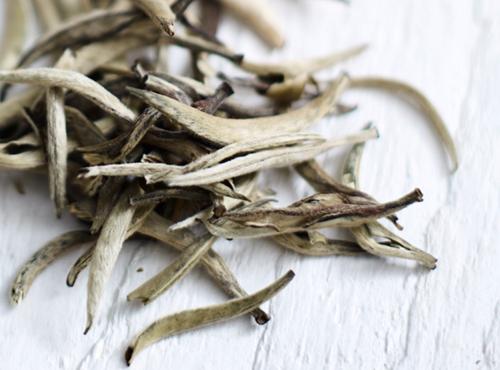
white tea
White tea is basically unprocessed tea and is named after the fuzzy white ‘down’ that appears on the buds. White tea is simply plucked and then left to dry. A bit of oxidation does happen naturally, as it can take 24 hours to air-dry the tea leaves, but very little. White teas should have a very pale green or yellow liquor – they are super-light and delicate teas, a real treat.
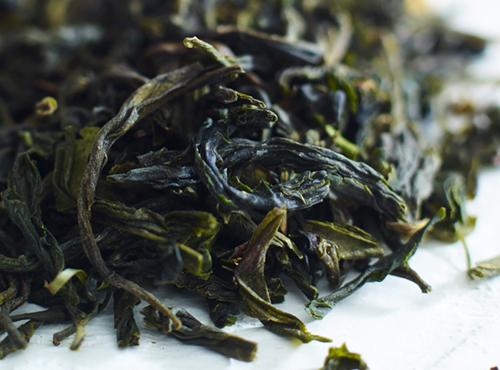
green tea
Green tea is plucked, withered and rolled and then either roasted (in something resembling a giant wok) or steamed like your veggies (in a big cylinder); this heats the leaves, preventing fermentation and sealing in that lovely greenness. Steamed green teas tend to have a more delicate taste than the roasted version.
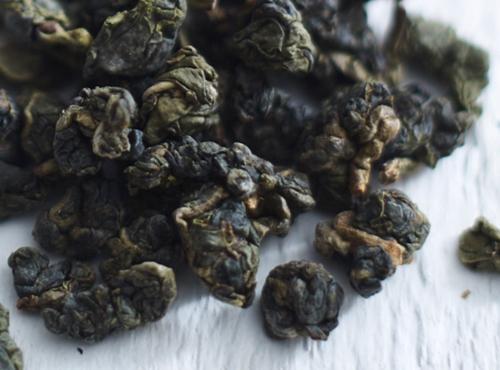
oolong tea
The leaf is plucked from the bush and allowed to wither. It's then twisted and allowed to ferment… partially; that is, it's allowed to turn slightly from green to brown but not completely, and it’s then dried in a giant oven. Sometimes called “blue tea”, oolong is between green and black – it has some of the strength of a black tea but still has the fragrant taste that you’ll find with a green tea. Best drunk without milk.
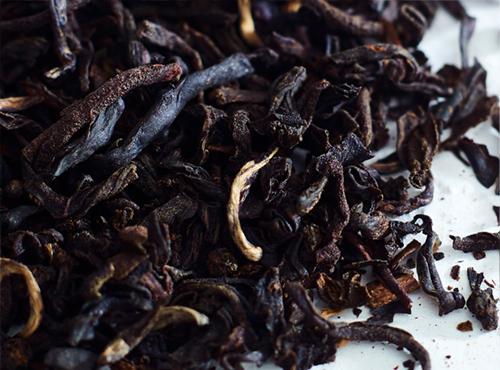
black tea
Black tea is plucked from the bush and withered in the open air. When the leaf becomes soft it is twisted and then fermented. The fermentation is the most important and skilled stage; this is when the leaf oxidizes and turns dark. Finally the leaf is cooked in a giant oven to seal in the flavour. Black tea is the British favourite, with milk and a couple of biscuits!
herbal infusions

peppermint leaves
Peppermint is native to Europe and The Middle East but is widely grown all over the world.
The active ingredient in peppermint is menthol, which is an organic compound that produces a cooling sensation when applied to the mouth or skin. Peppermint has been taken after meals for centuries and we love it as a tea and in a chocolate!

rooibos
Rooibos tea, (pronounced "roy boss") which is also known as red tea or Redbush tea is a soothing drink, sweet and nutty in taste, naturally caffeine free and low in tannin. It comes from the leaves of the Rooibos plant, which only grows in the Cedar Valley, deep in the heart of South Africa.
Rooibos is not a true tea, as it comes from the plant aspalathus linearis. It's a small shrubby bush that has very thin, needle-like green leaves that turn their characteristic red after fermentation.
Rooibos is packed full of nutrients and makes a great caffeine free alternative to regular tea because - although it's technically a "herbal" tea - you can still drink it with milk.
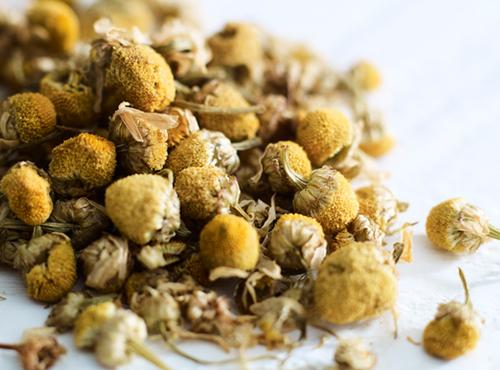
chamomile flowers
Chamomile is one of the old favourites among garden herbs and its reputation as a medicinal plant that helps you snooze is well known. The fresh plant has a lovely scent, with a distinct ‘appley’ smell - not lost on the Greeks, who named it ‘ground-apple’ (Kamal-melon).
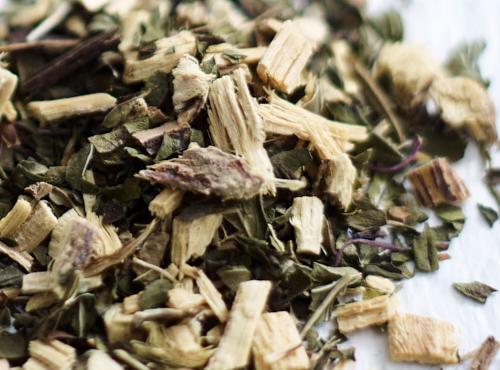
liquorice root
Liquorice, or sweet root as it is known, is grown throughout Europe and Asia. The roots of the small liquorice plant extend to 30ft in length, and it is this root which is used to make our tea thanks to its natural sweetness.
good vs bad tea
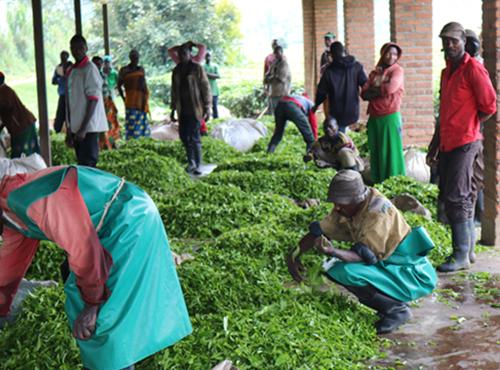
A good tea is a well-made tea - one that has been looked after and finely crafted. Generally tea estates have to choose between making large volumes of ok tea or a smaller amount of something really top-quality. If they choose the latter they will only pick the best leaves (the freshest shoots from the top of the bush) and process them very delicately ensuring that they don't damage the leaf.
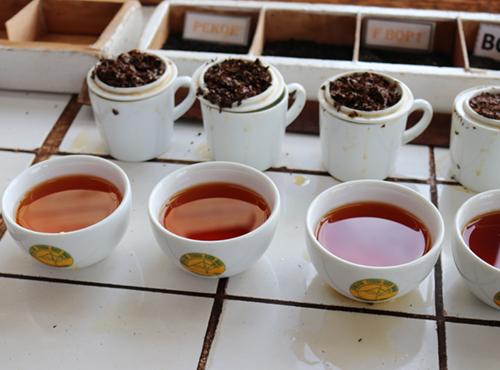
We always say, "The best tea is the one you love the best". And if you're anything like us, that will change depending on the time, the occasion, even your mood. We love all our teas, at different times - asking us to pick one would be like a parent choosing a favourite child! What you can be sure of is that teapigs teas will always be of the best quality.







